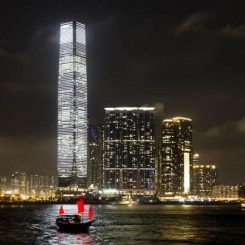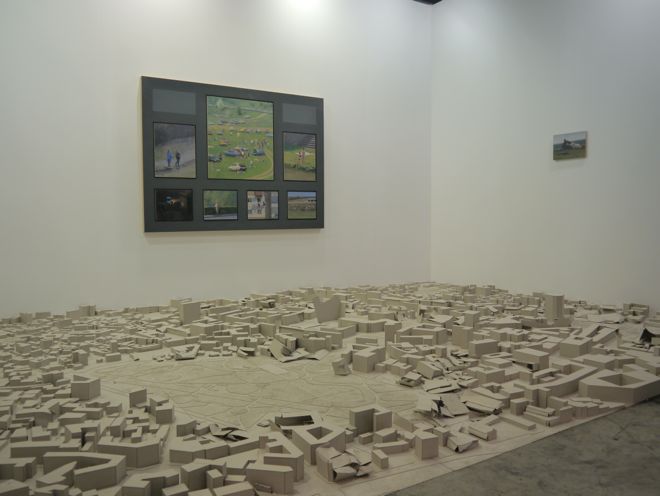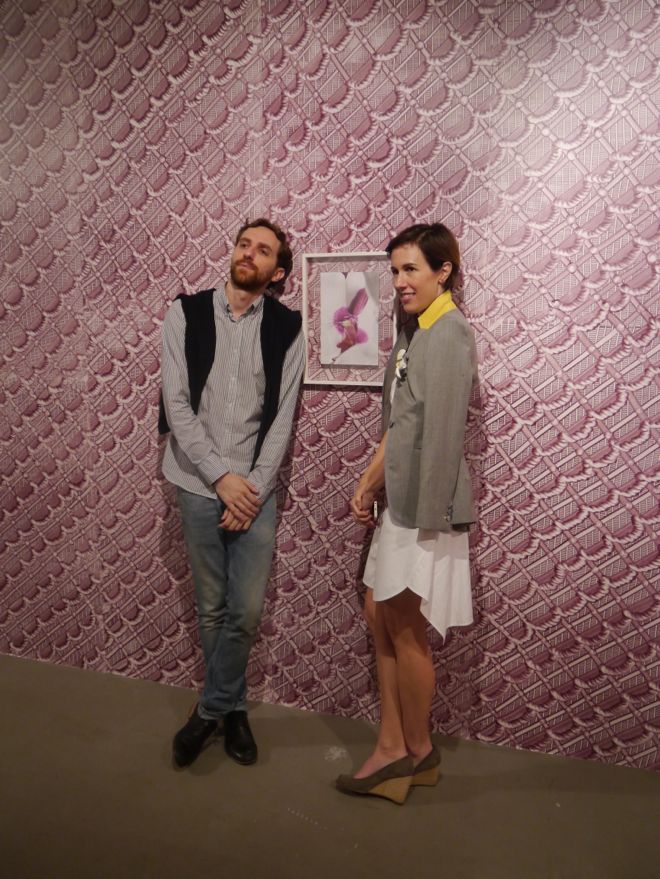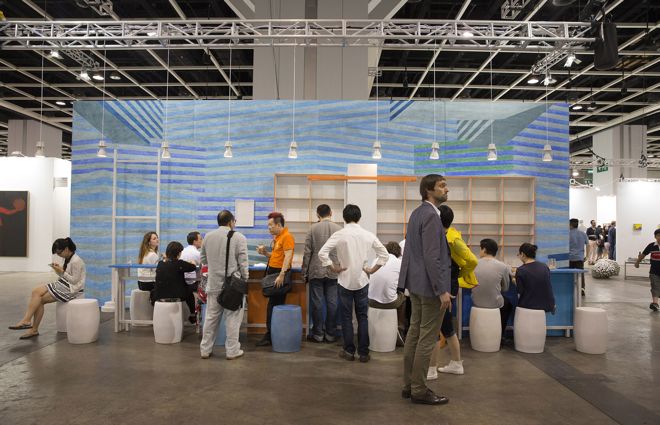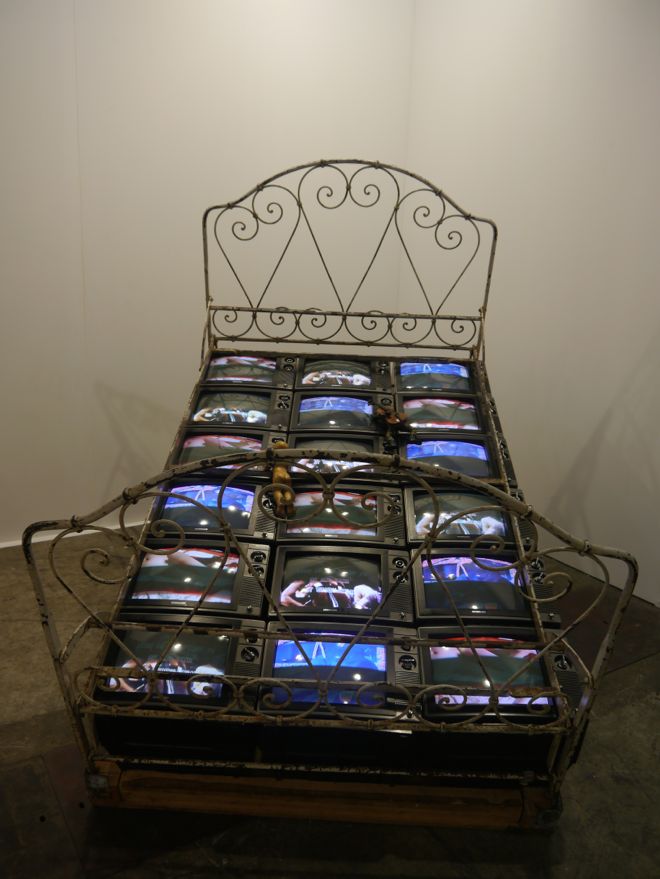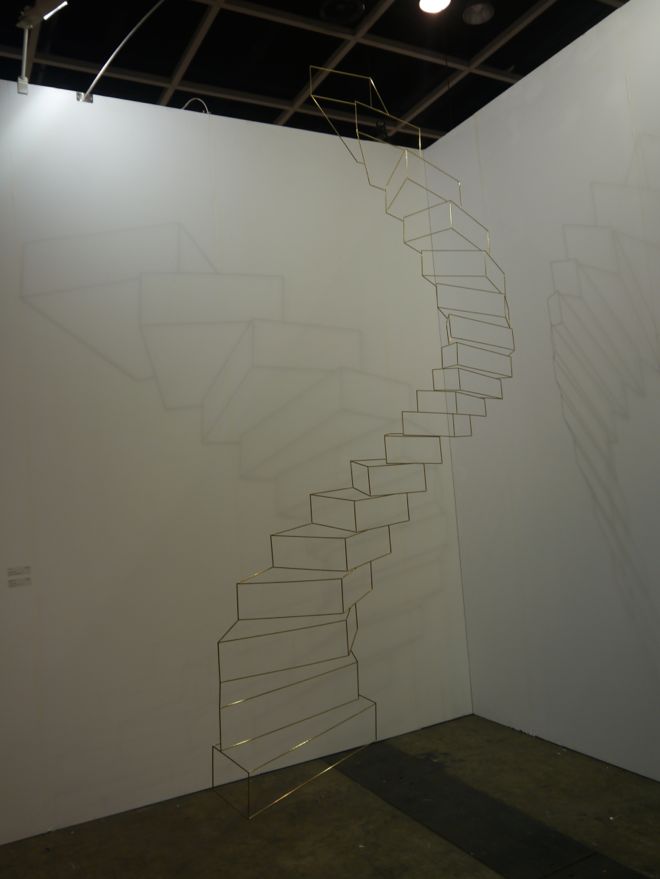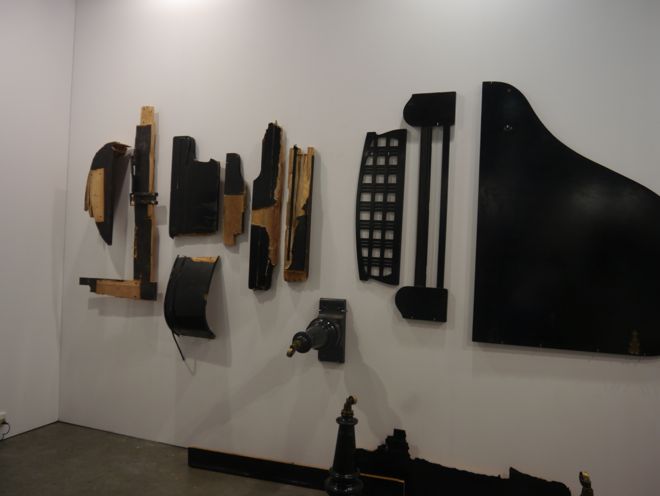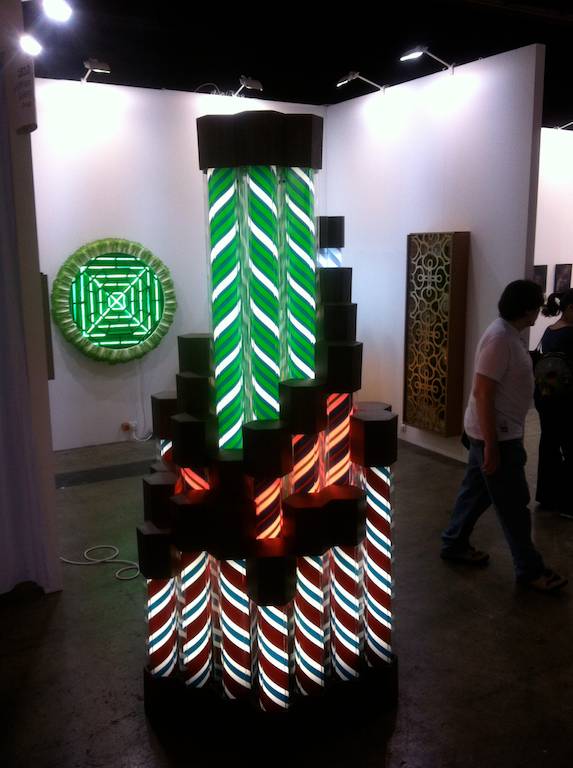Under the muggy subtropical drizzle, the Asian outpost of the Art Basel empire burst forth in Hong Kong for the second year amid frenetic networking and wheeling-dealing in the culturally and politically liminal city-statelet. The art fair’s long-term viability is assured, underpinned by rapidly-developing but still immature local and regional markets, while a still nascent art system is gradually taking root. The proximate fact of the nascent identity of Art Basel specifically in Asia is visible in a comparison between this year’s fair and the first edition of Basel in Hong Kong last year; repeat visitors would have noticed a swift and noticeable change in what galleries chose to bring this time round.
Maturity and Conservatism
While the minimum and average quality of art displayed was noticeably higher than last year (better galleries, minimal kitsch) the art displayed was generally conservative—innovation was seldom seen. This year, there was far less of the experimental Chinese work seen last year, and more in the way of, for example, a certain decorative abstraction. This was disappointing, given the opportunity Art Basel presents for showing this kind of work in an international channel within Asia.
Some galleries took measured risks that paid off, like Rirkrit Tiravanija’s provocative installation of oil drum barbecues with chromed sausages—which looked like something else—at Berlin’s neugerriemschneider (“Untitled 2009 (bring me the head of Thaksin Shinawatra)”, 2009). Many galleries, however, were too small or cautious to place bets. Many were quite satisfied with making their considerable costs back and meeting numerous new collectors. Few wished to be quoted for this article except for the purpose of marketing platitudes, accordingly Randian has decided not to quote any galleries.
Beijing Commune brought Qiu Xiaofei’s earlier work “A Sample Room—Toilet” (2007) amid what can now be classed as friendlier fare for art fairs (Xie Molin, Liu Shiyuan and Wang Guangle). Long March Space presented a piece by Xu Zhen (from the Play series) which honestly looks better in an exhibition, though their Zhan Wang piece (“Concealed Rock” 2012) highlighted an interesting new direction for the artist in subtle transparent form (cf. Roni Horn’s “Untitled (“Consider incompleteness as a verb.”)” (2010-12) two-color glass cubes that changes color (lavender to aquamarine) depending on the time of day and the weather).
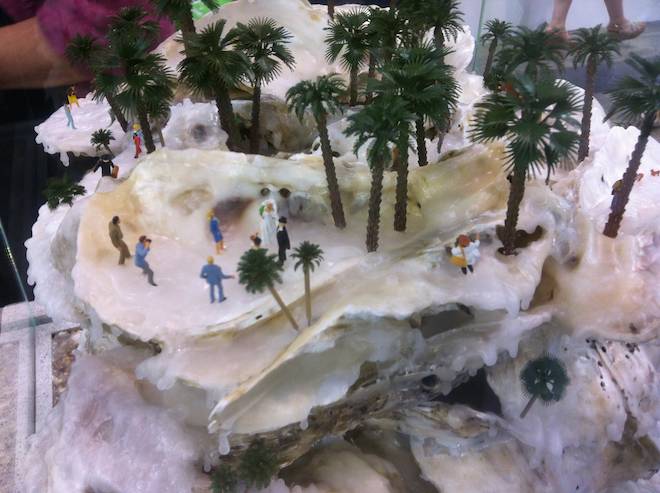
MAP Office at Shanghai Gallery of Art—SGA director, Josef Ng, was one of the few to curate beyond a mere group exhibition, taking up the theme of “an island”.
White Space offered up He Xiangyu’s crowd-pleasing “corpse” along with paintings that are captivating to various degrees (Gao Ludi, Jian Ce, Liu Ren). Gallery Exit had an interesting booth of various Hong Kong and Beijing artists. And Shi Yong had a rare outing with one piece in the ShanghART booth.
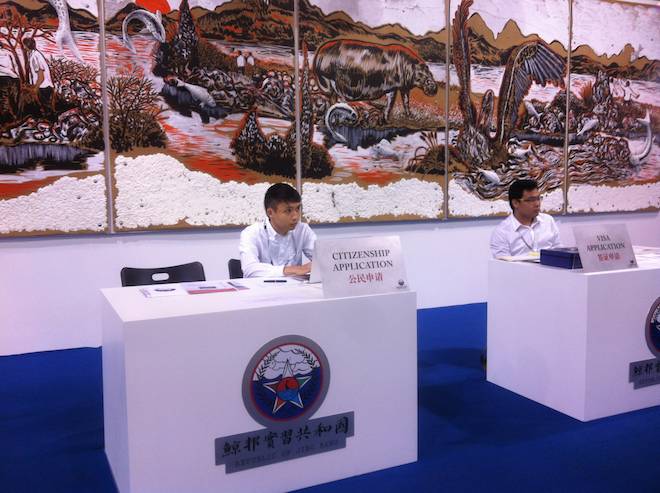
Sun Xun (孙逊), “Republic of Jing Bang” (鲸邦实习共和国): Citizens application desk—should have been installed at one of the entrances to the fair.
Reportedly, David Zwirner designed their booth around Oscar Murillo (he of the chocolate factory in their New York space). Other young rising stars stateside were present elsewhere—David Ostrowski, Alex Israel, and so on. James Cohan presented, among other pieces, the “TV bed” by Nam June Paik. One wry, almost predictable but popular send-up of the art world was Anastasia Klose’s “One Stop Knock-Off Shop” where faux T-shirts riffed on top artists, star curators, and blue-chip galleries.
One good thing about a fairly global art fair is the way hierarchy is leveled somewhat, so that you get one Chinese artist here, one German artist there, and maybe an American artist over there. Another is the chance to see a number of artists from the West who don’t get much of a showing in Hong Kong—Carsten Nicolai, Hans Peter Feldman, Simon Denny, just to name a few randomly. The downside is how showing individual art objects (for sale, of course) takes so, so much out of an artist’s complex set of practices. But that’s just harping; of course we know it’s just an art fair.
Strange Encounters of the 3D Kind
Art Basel Hong Kong’s public program was mixed. Discoveries, for emerging artists, was very interesting, but the wrong winner was chosen. Nadia Kaabi-Linke’s floor/wall comparative installation of prison cell floor plans marked with brass strips was pretty but a lazy curatorial choice (Experimenter, Kolkata). Not because the work’s themes of incarceration and rape are not important, but on the contrary because they are. Whether in an art fair or a museum or on the street, political metonymy, while perfectly valid, should not take priority over a critical approach to art (we are talking about art here; not a street demo). To put it another way, the tale shouldn’t wag the dog. Far more compelling—including politically—was the fragile and crushed cardboard world of Ciprian Muresan and Serban Savu (Galeria Plan B, Berlin / Cluj), with honorable mentions for Cheng Ran’s video and smashed piano (Leo Xu Projects, Shanghai) and James Capper’s monstrous excavator robot (Hannah Barry Gallery, London).
The video program, curated by Li Zhenhua, rightly received a lot of attention. Next year more should be done to bring it to a wider audience (for example with projections on the sides of buildings, shop windows and walkways around the exhibition centre). The weak link was Encounters, Hong Kong’s version of Basel’s Art Unlimited—always a dramatic curated show of large works (wall and sculpture), installations and cinema—, not because there were not many interesting art works but because the program did not do its job, which in addition to selling huge artworks, is also to excite, entertain, inspire and refresh visitors. In Hong Kong, instead of Encounters motivating the crowd, it often left visitors enervated. The environment was wrong. In an isolated exhibition space it would have been fine, just not in a huge convention centre surrounded the inevitable cacophony of competing galleries.
For instance, Shen Shaomin’s bewitching “I Touched the Voice of God” (2012; Osage Gallery, Hong Kong) needed better lighting, isolation and silence. The other standout pieces were Sun Xun’s whimsical—and critical—citizenship bureau “Jing Bang: A Country Based on Whale” (2014; ShanghART, Beijing, Shanghai and Singapore / S.T.P.I, Singapore), “Ping Pong Go-Round” (1998) by Singapore’s Lee Wen (whose solo show at iPreciation’s booth was one of the best), and Michael Lin’s “Point” stadium (Eslite Gallery, Taipei). Fortunately, some galleries brought their own crowd-pleasing large-ish works— Zhan Wang’s “45 Degrees” (2014; Eslite), Adrian Wong’s barbershop tower “Hypnagogia IV (Pet Supply, Sausages, Massage)” (2014; Rhona Hoffman Gallery, Chicago), Wang Luyan “W Fire At Both Ends Automatic Handgun D13-02” (2013; Pékin Fine Arts, Beijing/Hong Kong), and Zhang Ding’s “Cat” (2013; Galerie Krinzinger, Vienna).
In terms of layout, this year was much the same as last. Art Basel does it better than anyone else (a skill developed out of necessity, with so many galleries participating), but the Hong Kong building has inherent flow issues in certain black-spots due to the absence of access to other areas, particularly at the back of the third floor. This needs to be solved by creating a destination service like an art cafe…or Tobias Rehberger’s much anticipated (including by Randian) “Oppenheimer” art bar, which sadly was only open at set times (mostly it was empty, and then it just looked etiolated—a curatorial and marketing opportunity missed, even at the risk of damaging the work through usage).
Beyond the Hot Zone
Shows that opened around town last week were stronger than ever, including Michael Joo at SCAD (more than worth the effort of getting there), the fortunate coincidence of shows by Mark Bradford at White Cube and Toby Ziegler at Simon Lee Gallery, museum-quality historical shows of Giacometti at Gagosian and Chinese modernists at de Sarthe Gallery. As usual, Osage gallery and foundation put on something special, this time the Charles Mereweather-curated “Market Forces” exhibition at Osage Kwun Tong and the Hong Kong City University. Importantly, the Island South (Wong Chuk Hang / Aberdeen / Ap Lei Chau) art district of Hong Kong is now clearly established. Let us hope that the opening of the new metro line next year will not kill this. Don’t hope too hard.
The best satellite project by far was not Carsten Nicolai’s skyscraper light show, however prominent (although it was a terrific advertisement for Art Basel Hong Kong), but Nadim Abbas’s Absolut Art Bar, “Apocalypse Postponed: a cyberpunk bunker”, and the associated program which included Carsten Nicolai as DJ and Ming Wong as Lady Gaga. Notable also was the Adrien Cheng-curated Zhang Enli show at a K11 Foundation pop-up space, not least for the curator.
Art Basel Hong Kong remains the baby to its established siblings in Basel and Miami, but it is still by far the most important art fair in the entire Asian region. Its influence extends beyond mere commercial trade, creating a timely incubator for rigorous exhibitions and cultural development. M+, Asia Art Archive and the Liang Yi Museum of historical furniture (which opened last week in central Hong Kong) did not need Art Basel to get started, but the fair has certainly helped put them on a world stage, bringing with it the world’s leading art players, armed with name cards and iPads, to come and look.
The mood this year may have been less excited than last, and the offerings more conservative, but such mood swings are to be expected where the ground is being tested. One hopes that conservatism will not triumph next year at this fair, which should be the place to go not only for startling international works (in the Basel mode), but also for robust and emerging art coming from the local region which the world should want, and be willing to travel, to see.
(by Chris Moore, with contributions from Daniel Szehin Ho and Iona Whittaker)
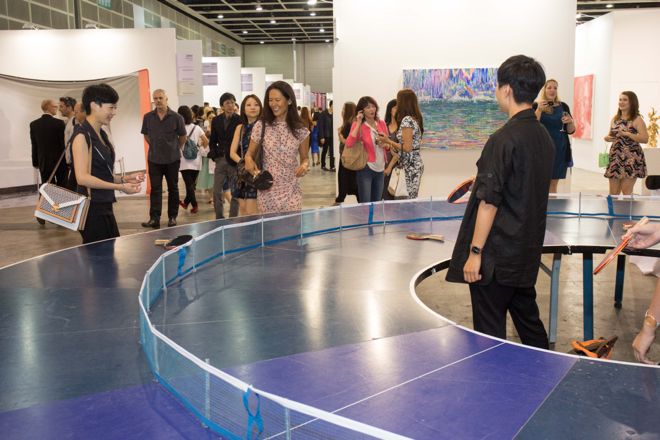
Lee Wen “Ping Pong Go-Round” 1998 at iPreciation gallery in Encounters section—very, very, very popular with school children.

